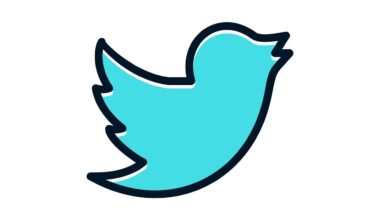Analyzing Memes for Social Media: What Makes Them Successful?
Memes have become an integral part of social media, acting as tools for communication and entertainment. Their success often hinges on a few key factors that creators should understand. A successful meme is typically relatable, allowing followers to connect emotionally with the content. Humor is essential; it invites sharing among users, broadening the meme’s reach. Timeliness also plays a role, as memes that reference current events or trends are often shared widely. Creators should strive for originality, presenting unique takes on familiar concepts. Furthermore, aesthetics attract attention—designing memes that are visually striking can increase their virality. The integration of text and imagery must be well-balanced; clarity and simplicity are crucial to communicating the intended message quickly. It’s also vital to consider your target audience, as memes that resonate with specific demographics perform better. Finally, monitoring performance metrics can provide insights, aiding in the creation of future successful memes. By understanding these factors, content creators can significantly enhance their social media strategies, improving engagement and connection with their audience.
The Anatomy of a Meme
To create a successful meme, one must understand its anatomy. At its core, a meme combines visual elements—images, videos, or GIFs—with text that enhances meaning or humor. The first component is an engaging image; it should be compelling enough to catch the viewer’s eye instantly. This could be anything from a pop culture reference to an everyday situation. The second component is text, which should be concise yet impactful. Catchy phrases or relatable quotes enhance the humor and encourage sharing among users. Additionally, the meme’s format is crucial; whether it’s an image macro, a video clip, or a comic strip, each serves different purposes and audiences. Memes should also incorporate universal themes—love, friendship, or frustration ensure a broader appeal. Using recognizable styles, like specific fonts or layouts, adds familiarity, making it easier for audiences to resonate with the content. Lastly, consider the cultural context when designing memes, as what’s humorous or relatable can vary widely across different cultures. Paying attention to these details can significantly increase the likelihood of a meme’s success.
Timing is another critical aspect of meme creation. Sharing content that aligns with current trends or events can boost visibility and engagement. This timing, however, requires creators to stay informed about what’s happening in the world. Seasonal memes, for example, capitalize on holidays or events, drawing connections that can evoke a strong emotional response. Additionally, using trending hashtags can make a meme more discoverable, as users frequently browse content that falls under popular tags. Platforms like Twitter or Instagram often trend within specific events—crafting a meme around that event can maximize its reach. However, creators must balance relevance with originality; simply rehashing existing memes without adding fresh perspectives might lead to overlook. Consistently experimenting with timing and content will help refine what works best for specific audiences. Furthermore, utilizing tools like social media analytics can provide valuable data on which memes performed well during specific times, guiding future endeavors. In conclusion, strategic timing in conjunction with cultural awareness is essential for creating memorable memes that resonate with the audience.
Design Elements That Matter
Design elements are crucial in making a meme stand out amidst a sea of content. The choice of colors significantly influences user perception; bright, contrasting colors can draw attention, while muted tones may have a calming effect. Typography is equally important; fonts should be legible, and attention-grabbing, contributing to the overall message without overwhelming the visuals. The placement of text on the image can impact readability and aesthetic appeal—positioning it correctly helps guide the viewer’s gaze. Furthermore, incorporating visual hierarchy aids in highlighting essential parts of the meme. Adding brand logos or tags strategically can also promote branding without detracting from the humor or message. Knowing the ideal dimensions for different platforms ensures that memes display well across devices. Notably, avoiding clutter is crucial; a busy meme may confuse viewers, detracting from its effectiveness. Instead, strive for cleanliness and clarity, allowing the core message to shine through. Using these design principles can place memes above others, ensuring they are memorable and easily shareable among viewers, enhancing overall engagement across social media.
The psychology behind memes plays a significant role in their effectiveness. Understanding why certain memes resonate can aid creators in producing content that connects. Memes are often shared because they elicit emotional responses—laughter, nostalgia, or even compassion. An impactful meme taps into the viewer’s shared experiences or feelings, creating a sense of belonging or togetherness. Humor, in particular, is a powerful tool; it fosters a relaxed atmosphere, prompting shares among friends or family. Additionally, the element of surprise, whether through an unexpected punchline or a creative twist, can captivate attention and encourage circulation. Many viewers also engage with memes reflecting their beliefs or values, showcasing their personality or sense of humor among peers. Interactivity, such as memes that invite audience participation, can further enhance their appeal—encouraging users to create or share their variations. By grasping the psychology behind meme-sharing, creators can craft content that speaks to audiences on a deeper level. Recognizing these psychological triggers will bolster the chances of memes becoming viral sensations within the cluttered landscape of social media.
The Role of Community in Meme Success
A community provides the essential support for meme success; these social interactions amplify exposure beyond what a singular creator can achieve alone. Memes that resonate within a specific community thrive, as they embrace shared experiences and understandings that are unique to that group. Engaging with followers through comments, shares, or collaborations can aid in building a loyal audience who will endorse and share the work. The more a meme aligns with community values, humor, or former conversations, the more likely it will gain traction. Furthermore, followers often contribute their interpretations, adding layers to the meme’s meaning and reach. Nurturing a sense of community fosters trust; when followers feel appreciated and heard, they are more inclined to promote the creator’s content. Additionally, participating in discussions or trends relevant to your niche can open organic avenues for meme sharing, attracting new audience demographics. Creators should actively respond to comments, ask for user-generated content, or run challenges that incorporate community involvement. This approach fosters genuine connections, leading to increased visibility and sustainability of the creator’s social media presence.
Finally, continuous learning from analytics can significantly impact the ability to create effective memes. Regularly analyzing the performance of shared memes reveals valuable insights regarding audience preferences and behavior patterns. Collecting metrics such as share count, engagement rates, or audience demographics informs creators about what resonates most. Platforms often provide tools to track successful posts, allowing for the identification of trends over time. Combining these insights with broader social media trends can refine future meme strategies, ensuring they remain relevant and engaging. Ongoing evaluation also highlights which formats or themes yield the best outcomes, enabling creators to focus on what works. Collaboration with mentors or engaging in discussions within communities can also provide new ideas and techniques for meme creation. Adapting to changes in user behavior, platform updates, and cultural shifts is crucial for sustained success. Ultimately, leveraging analytics and community feedback lays the foundation for creating impactful memes that thrive in the ever-evolving landscape of social media.


